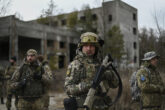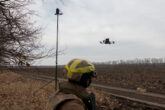September 28, 2020
Making the U.S. Military’s Counter-Terrorism Mission Sustainable
One of the many hallmarks of the Trump administration has been its capricious approach to troops deployments, especially ones related to counter-terrorism. President Donald Trump has zigged and zagged on whether to maintain troops in Afghanistan, Iraq, and Syria, sometimes sending Pentagon planners scrambling to keep up. Over the weekend, his administration threatened to pull out U.S. forces from Iraq as a way to pressure the government there to rein in Iran-backed militia groups. Meanwhile, in the background, Defense Secretary Mark Esper has been conducting a review of each combatant command to ensure they have the right mix of personnel and resources to meet the 2018 National Defense Strategy’s priorities. The review has not been entirely devoid of drama. It advocates reducing the U.S. military footprint in Africa, a move that has engendered pushback from Congress and U.S. allies. One should not equate Trump’s manic demands, which appear driven almost entirely by electoral calculations, with Esper’s more sober review, but both highlight the challenges of reducing the military’s counter-terrorism mission.
Focusing on interstate strategic competition requires investing the mental energy necessary to develop a more sustainable approach to counter-terrorism.
The 2018 National Defense Strategy made a stark declaration, “Inter-state strategic competition, not terrorism, is now the primary concern in U.S. national security.” The military’s counter-terrorism mission is not going away, however, and likely will require attention, resources, and manpower for the foreseeable future. In addition to exerting ongoing pressure on terrorist organizations, American forces enable intelligence collection — especially in hostile environments — and provide the means to conduct swift action against individuals and networks involved in plotting, directing, or attempting to inspire attacks against the United States. A military counter-terrorism presence can facilitate activities conducted by civilian departments and agencies as well as make U.S. partners more effective. This is not an argument for maintaining the status quo, which appears unsustainable and disproportionately large relative to the current terrorist threat, but rather an affirmation that the military still has an important role to play in counter-terrorism. The issue at hand is, or should be, how to adjust this role relative to the terrorist threat and other U.S. priorities.
Read the full article in War on the Rocks.
More from CNAS
-
Defense / Transatlantic Security
When Defense Becomes Destruction: Austria-Hungary’s Mistake and Ukraine’s RiskThis article was originally posted on War on the Rocks. The southeastern Polish city of Przemyśl, with its elegant 19th century Habsburg-era train station, remains one of the ...
By Franz-Stefan Gady
-
Defense / Transatlantic Security
Ukraine’s Catch-22 MomentThis article was originally published in the Financial Times. In Joseph Heller’s wartime classic, Catch-22, the protagonist Yossarian seeks out the US army surgeon Doc Daneeka...
By Franz-Stefan Gady
-
CNAS Insights | Budgetary Own Goals Undermine “Speed and Volume”
On November 7, Secretary of Defense Pete Hegseth laid out a plan to overhaul the Department of Defense’s (DOD’s) acquisition system. Placing an emphasis on delivering new capa...
By Philip Sheers, Carlton Haelig & Stacie Pettyjohn
-
Drones: Who Is Making the New Weapons of War?
From Ukraine and Russia to Gaza and Sudan, drones have become a key weapon of war. Which companies are making them, and profiting from this rapidly expanding but controversial...
By Stacie Pettyjohn




